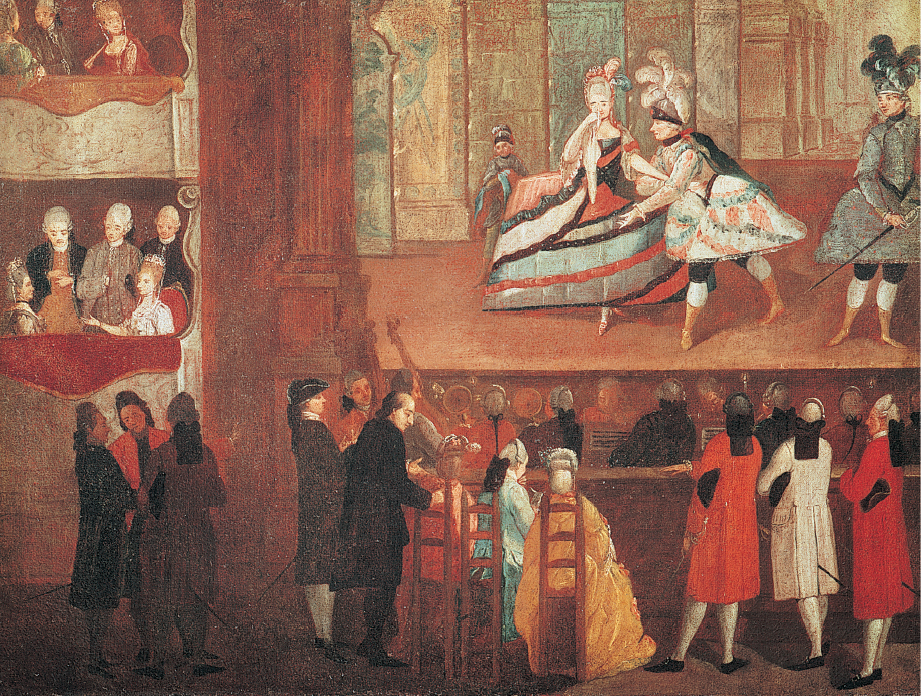1 | Opera
The principal genre of secular vocal music of the Baroque era was opera. Introduced around the year 1600, opera soon flourished mightily all over Europe, and became the most glamorous and probably the most adventurous and influential artistic genre of the Baroque era.
Any general description of the emotional world of Baroque art must feature its theatrical quality (see page 113). The Baroque was fascinated by the theater, and especially by opera — the ultimate multimedia experience of its day, combining poetry, drama, music, vocal virtuosity, scenic splendor, dance, and more. Spectacle was of the essence in Baroque opera — spectacular singing, to be sure, but also spectacular stage architecture, featuring amazing transformation scenes and the like. Systems of pulleys and counterweights could rapidly change the set from a palace to a magic garden, with gods and goddesses descending from the heavens in a fiery chariot. Opera offered a wealth of satisfactions, then — most obviously, no doubt, for the vocal connoisseurs of the day, the fans of great singers. They are said to have gossiped, gambled, and flirted in the boxes while waiting for the special moments when their favorites sang.

But opera’s ability to project emotion was the real basis of its appeal. First and foremost, opera offered a stage on which individual singers could step forward to express feelings in the most direct and powerful fashion. Since the singers were portraying characters in a drama, they were repeatedly thrown into situations that made it seem natural for them to experience (and express) intense emotions.
Such emotions were made all the more intense by music. Emotion could be intensified by great vocal virtuosity, too. The most obvious kind of vocal virtuosity is coloratura singing — fast brilliant runs, scales, high notes, vocal cadenzas, and so on, stressing technique for its own sake. But the legendary singers of old moved their audiences not only by singing faster than anyone else but also by singing more beautifully, more delicately, and more emotionally.